
Attack transport is a United States Navy ship classification for a variant of ocean-going troopship adapted to transporting invasion forces ashore. Unlike standard troopships – often drafted from the merchant fleet – that rely on either a quay or tenders, attack transports carry their own fleet of landing craft, such as the landing craft, vehicle, personnel (LCVP) or Higgins boat.

USS Thuban (AKA-19/LKA-19) was an Andromeda-class attack cargo ship in service with the United States Navy from 1943 to 1967. The ship was scrapped in 1984.

Haskell-class attack transports (APA) were amphibious assault ships of the United States Navy created in 1944. They were designed to transport 1,500 troops and their combat equipment, and land them on hostile shores with the ships' integral landing craft.

The Gilliam-class attack transport was a class of attack transport built for service with the US Navy in World War II.

USS Feland (APA-11) was a Doyen-class attack transport which served with the US Navy during World War II. She saw service in the Pacific War, and safely returned home post-war with five battle stars to her credit.

USS Buckingham (APA-141) was a Haskell-class attack transport in service with the United States Navy from 1945 to 1946. She was scrapped in 1974.
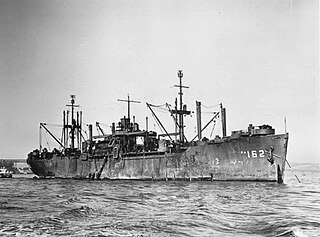
USS Drew (APA-162) was a Haskell-class attack transport in service with the United States Navy from 1944 to 1946. She was scrapped in 1974.
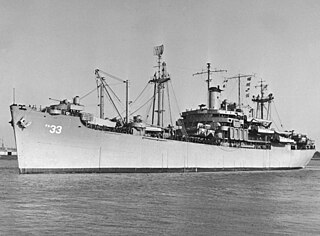
The Bayfield-class attack transport was a class of US Navy attack transports that were built during World War II.
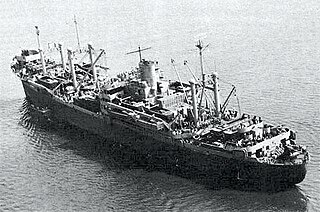
The Sumter-class attack transport was a class of attack transport built for service with the US Navy in World War II.

The Frederick Funston-class attack transport was a class of two US Navy attack transports. They saw service in World War II and later in the Korean War.

The Windsor-class attack transport was a class of nine US Navy attack transports. Ships of the class saw service in World War II.

The Ormsby-class attack transport was a class of US Navy attack transport that saw service in World War II.
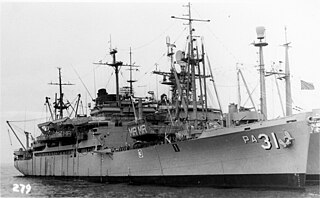
The Crescent City-class attack transport was a class of U.S. Navy attack transports that saw service in World War II and the Korean War. There were four ships in the class: USS Crescent City, USS Charles Carroll, USS Monrovia, and USS Calvert.

The Harris-class attack transport was a class of US Navy attack transport which saw service in World War II. The purpose of any attack transport was to deliver troops and their equipment to hostile shores in order to execute amphibious invasions using an array of smaller integral landing craft. Being intended to serve in forward combat areas, these ships were well armed with antiaircraft guns to protect itself and its vulnerable cargo of troops from air attack in the battle zone.
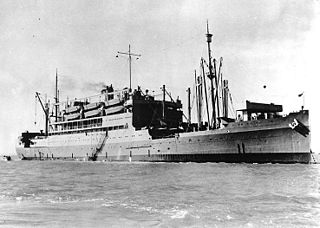
The McCawley-class attack transport was a class of US Navy attack transport built in 1928 that saw service in World War II.

The Heywood-class attack transport was a class of US Navy attack transport built in 1919 that saw service in World War II.

The President Jackson-class attack transport was a class of seven US Navy attack transport that saw service in World War II.

The Arthur Middleton-class attack transport was a class of three US Navy attack transport that saw most of its service in World War II. Ships of the class were named after signatories of the American Declaration of Independence.

An amphibious warfare ship is an amphibious vehicle warship employed to land and support ground forces, such as marines, on enemy territory during an amphibious assault.

The Type P1 ship is a United States Maritime Administration (MARAD) designation for World War II passenger ships. P1 was used in World War II, Korean War and Vietnam War. Type P1 were the smallest of the P-class ships, at 400 to 500 feet long. Two P1-S2-L2 ships were built for the Navy and used as attack transports (APA). Many P1 type ships were built on Type C3-class ship hulls.



















